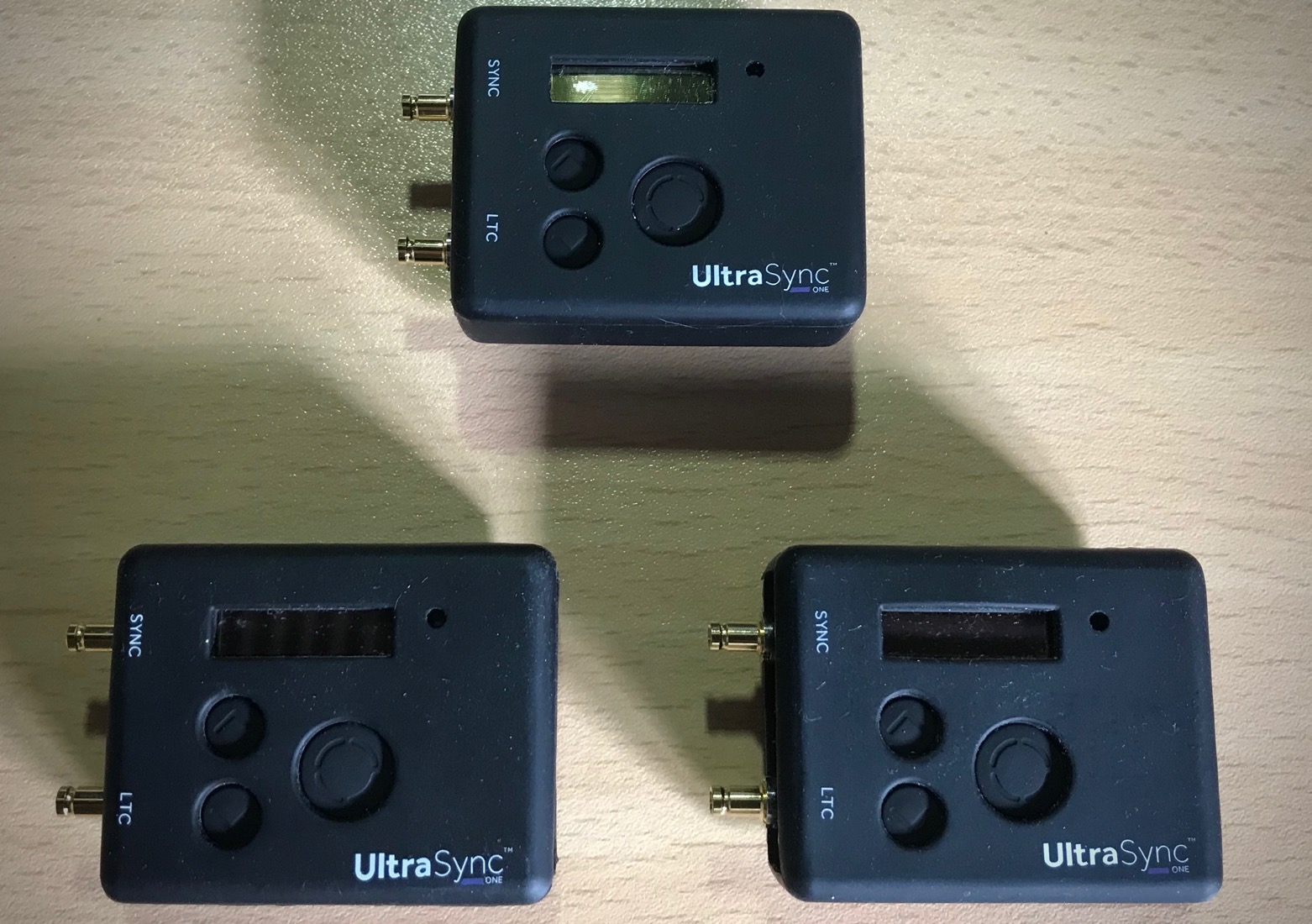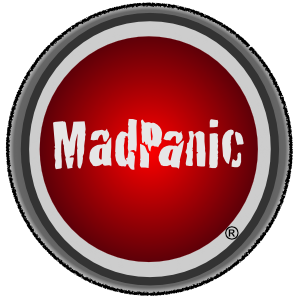It's about time
07/12/18 14:37 Filed in: Production | Editing
I have received these UltrasyncOne wireless timecode synchronisation devices from Pinknoise systems, and three really is the magic number! If you're responsible for editing, it is one of those things that once you have it, you'll never want to work with footage that doesn't have synchronised timecode again!


As we all know, when recording multi-camera or even, single camera with an external sound recorder, when it comes to the edit, all this footage has to be synchronised. Modern software does a pretty good job if all your devices are recording sound by analysing the audio waveforms and matching them. This is all well and good if things work out ok, but it's still a semi-manual process which just lines things up once. If one of your cameras isn't recording sound or you have a close up camera and a distant camera that can't record the same audio, then things get more tricky and you hope that someone has used a clapper board so you can visually sync things. The other point to note with matching waveforms is that sound takes a noticeable amount of time to travel, so syncing may introduce slight, but noticeable to some, lip sync issues.
I have been on a number of shoots where, particularly when time is running out, corners get cut and clapperboards are not done either effectively or at all. This also doesn't help with syncing clips in post production. Of course, it's the editor that has to deal with this. Davinci Resolve does have some pretty powerful manual sync tools, but I've found that I have had to use pluralyeyes and import sequences from XML on some things. If only everything could just be synchronised and take this unnecessary work away, and of course, that's what timecode is designed for. The UltraSyncOne system from Timecode Systems is perfect, and also, well within the reach of small independent producers. The UltraSyncOne is such a flexible system. Not only does it have standard timecode in/out for connection to professional equipment that supports timecode, it also has LTC (longitudinal time code), which is timecode that is encoded in a standard audio stream. This means that it can plug into any equipment that supports recording an audio track, i.e. all video cameras, such as DSLR.
I still have two Canon XLH1 cameras which I use Atomos Samurai (very old SDI recorders), that record 10-bit Prores, however the model of cameras I have doesn't supply timecode or audio over the SDI link, but the Atomos does have an external audio input, so by sacrificing one channel, the UltraSyncOne LTC output can be fed into the XLH1 and in-turn, recorded on one audio channel in the atomos.
The LTC signal on it's own is interpreted by NLE's as just an audio track which, if you listen to it, really is a garbled noise like an 80's modem! Davinci Resolve however, can simply extract the timecode from this signal and apply it to the timecode metadata for a media clip. Also in Davinci Resolve, once you have extracted the timecode (which is quick and trivial), you can remove the LTC audio track from the available channels using clip attributes.
I generally record sound using a separate sound recorder such as the Zoom F8. This is fully compatible with the UtraSyncOne as it supports timecode, both in and out. The F8 acts as the master clock source and an UltraSyncOne can be connected to the timecode output of the F8 and jam synced to it. The UltraSyncOne will be sample accurate for longer than battery will last so can be disconnected if needed and used as a source for a camera. Just be aware though, that if you power off an external recorder that is disconnected from an UltraSyncOne, it is best to re-sync to ensure that the clocks are indeed, synchronised.
I said at the beginning of this, that there are three UltraSyncOnes in the kit. When one is set as a "master" and the others are set as receivers, all the UltraSyncOnes will synchronise over RF, so you only need to sync the master with your master clock source. Of course, you can also just use the master UltraSyncOne as a master clock source and feed all your devices that need timecode with an ultrasyncone signal.
So assuming you have used the UltraSyncOnes in the field and correctly recorded synced timecode. how does that help? In Davinci Resolve (I now only work with this software), you can create multicam clips and sync on timecode. Furthermore, if you forget to sync at any point, the timecode is all built into the files, so all you have to is navigate to the same timecode in which ever clip / timeline you are working with. It makes post production so much easier.
The UltraSyncOnes are lightweight, chargeable through a USB cable, and hold their charge for at least 24 hours, longer than any shoot I've been on! I the tests I have done, by using multiple devices turned on after time had elapsed, it was frame accurate even after 36 hours!! It comes with all the cables needed for both input and output of timecode (colour coded but essential the same), and you can get LTC cables separately which have a 3.5mm jack plug for connecting to analogue recording equipment such as DSLRs.
There is even an UltraSyncBlue which allows you sync with some devices over bluetooth, such as the iPhone when using recording software like Mavis which has built in support. So you can even synchronise a set of iPhones, and the UltraSyncBlue also syncs over RF, so one system and many connection options. A very well thought out system indeed and I don't think I will ever want to work on a mulit-camera / separately recorded sound project that I will end up editing, without using the UltraSync timecode system.
The only issue I have experienced so far is that to use the UltraSyncOne with a sound recorder that doesn't support timecode, i.e. LTC into one audio channel, Davinci Resolve can't seem to extract the timecode from the channel and apply it to the other channels / waveforms. For example, I have a Roland R-26 6 channel recorder. This sets the electronic timecode as a date/time on the file. The LTC I have recorded on the plugin Mic interface which gets recorded to one of three stereo files by the R-26. Davinci Resolve just can't handle this. I have developed a docker image that can extract the LTC timecode from the waveform and edit the BWF metadata of the WAV's in question as a DIT function before importing into Davinci Resolve. So when imported into Davinci Resolve after this pre-work, the timecode is already correct and no need to do anything with the LTC.
As a side, during this development, I noticed that if the LTC timecode doesn't start at the very beginning of the WAV file, say it starts 2 seconds in because the cable wasn't plugged into the camera properly but recording has started, although you have the timecode at the point that it was connected, Davinci Resolve reads the first timestamp it can decode and applies it to the start of the video file. This has the effect of offsetting the timecode. I have also dealt with this in the docker container such that it will read the 1st LTC timecode it can decode and correct the offset. With ffmpeg tools included, I will make this correct video files also in due course.
blog comments powered by Disqus
